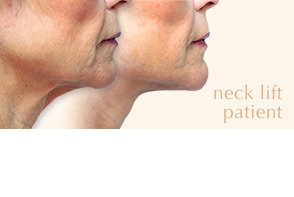Could Fish Skin Be the Key to Improved Wound Healing in the Future?

When it comes to any kind of surgery, it’s normal for patients to ask questions, such as “will I experience any pain?” and “are there potential complications?”
While those are important things to know, the top inquiry I hear is “how will my scars look after cosmetic surgery?” Refined surgical techniques make a difference, though a lot will depend on following your surgeon’s instructions. These typically include avoiding certain supplements, caring properly for your incisions sites, and never subjecting healing scars to movement or stress.
All that said, doctors are also continually looking for new ways they might help improve scar healing. That’s why I have been intrigued by recent research into a biological wound dressing made from fish skin to help promote optimal wound healing—and how it might help cosmetic surgery patients in the future.
The Aesthetic Channel shared the details of a recent study about how this biological dressing can help those with complicated wounds due to certain medical conditions. Here’s what they discovered.
Omega 3-rich fish skin has similarities to human skin
This new biological wound dressing option is made from intact skin of cod fish, which is processed to create a wound matrix. Advantages include the fact that is high in omega 3 fatty acid and naturally resistant to bacteria.
The structure of the fish skin wound matrix is amazingly similar to that of human skin in that it allows the growth of keratinocytes and fibroblasts—types of skin cells that help facilitate healing and healthy new skin growth. Additionally, the high omega 3 content can help your body synthesize anti-inflammatory metabolites and create a more optimal environment for wound healing.
When applied to the complicated wounds of 23 patients in a study published in the German journal Gefasschirurgie, the biological wound matrix helped heal the wounds and potentially reduced the need for analgesics. While further study is needed, the results are promising—and an Icelandic company is already producing these products for burn patients and battlefield victims.
You can find the full study here for more information.
So, what does this mean for cosmetic procedures?
While these promising studies have focused mainly on treating patients who have vascular or diabetes-related wounds that are traditionally very painful and slow to heal, this research will inevitably expand and, if results remain positive, be adopted by a number of specialties to help ensure proper healing of surgical incisions.
The ultimate goal of procedures like a facelift or breast augmentation is to improve the way you feel about your appearance, and it’s normal to worry about an unsightly scar impacting the final outcome. The good news is existing advancements in surgical techniques and the devices and products we use have already allowed experience plastic surgeons to substantially minimize scarring—so you can still get a beautiful result with today’s techniques.
At my plastic surgery practice in Asheville, I consider scarring throughout the entire surgical process, recovery, and once you have healed. I make the smallest possible incisions that will still achieve your goals, and place them inconspicuously where they can be most easily hidden. For most patients who follow after-care instructions, scars naturally fade over the course of time, becoming thinner, lighter, and hardly noticeable.
It’s exciting to see advancements in medicine that can help patients have a better overall experience, and I can’t wait to see what else is learned about this innovative option for wound healing.



